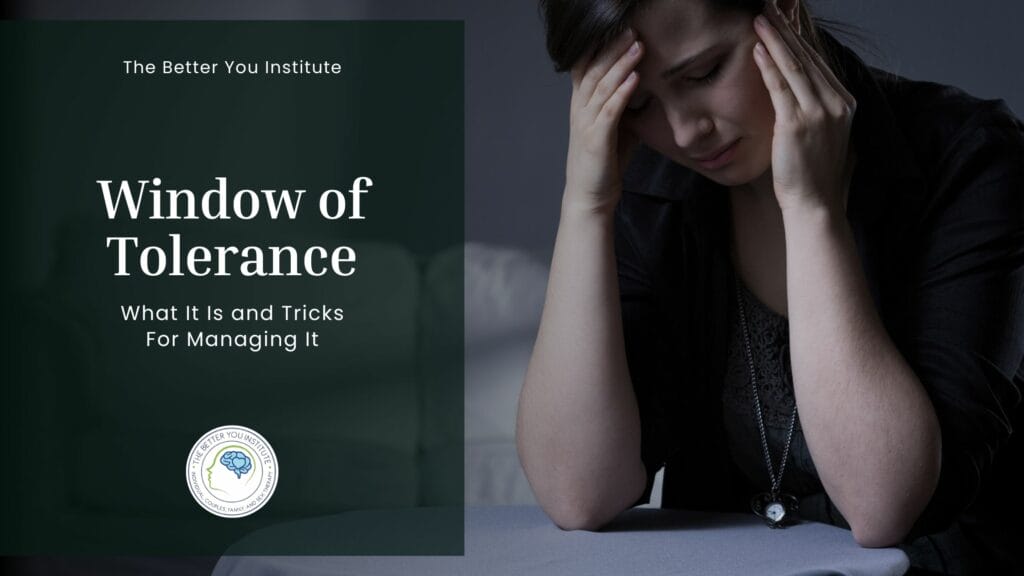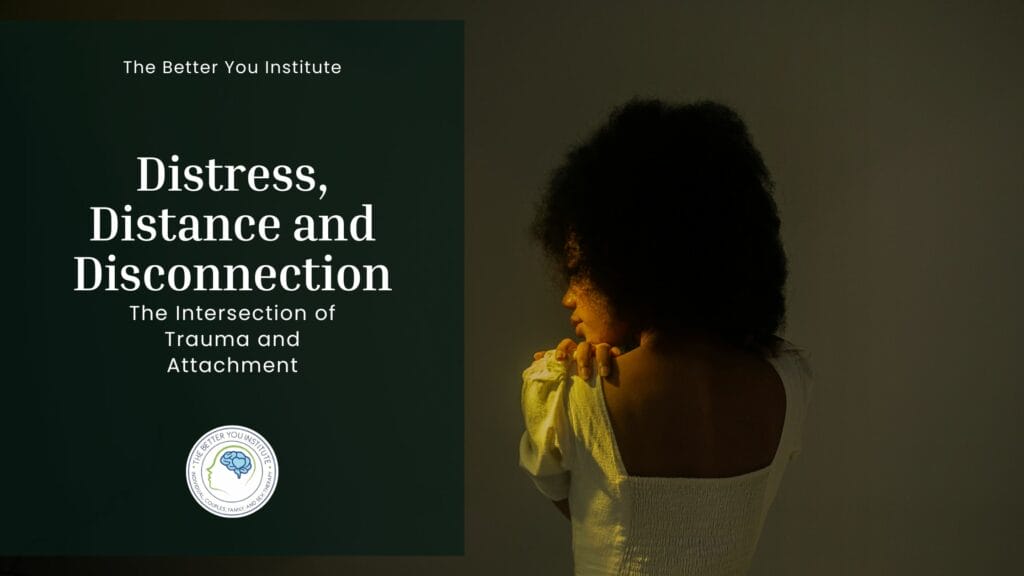OCD in Adolescents & Children: Symptoms, Diagnosis & Treatment
Has your child or teenager been recently diagnosed with Obsessive Compulsive Disorder (OCD)? Or maybe they are displaying some symptoms but you are unsure if they are related to a diagnosis or not. OCD is a mental health disorder that has become an increasingly popular topic in recent years. Although portrayals of OCD in the media are often misrepresented or misunderstood, OCD is far more complex than just liking things clean or being particular about certain things. Throughout this discussion, we will explore the different types of obsessive compulsive disorder and what it looks like in children and adolescents.
What is OCD in children and adolescents?
Obsessive Compulsive Disorder (OCD) is a mental health diagnosis that consists of two important parts: obsessions and compulsions. A child with OCD will experience intrusive and obsessive thoughts that are based on fears. Compulsive rituals may be used to manage the anxiety that comes along with thoughts. Obsessions and compulsions can develop as children grow, making them more frequent and debilitating as children get older.
Table of Contents
Obsessions
The first aspect of OCD, obsessions, are unwanted and troubling thoughts. These thoughts are extremely exhausting, bothersome and even painful to the person experiencing them, which in turn brings the other side of OCD, compulsions. Common obsessions in adolescents and children with Obsessive-Compulsive Disorder (OCD) can include fear of germs or contamination, concern about illness or death, worry about negative occurrences happening, fear of performing violent actions, fear of harm coming to themselves or loved ones, excessive concern with symmetry or orderliness, disturbing sexual thoughts or images, troubling religious thoughts, worry about sexual orientation, and fear of making mistakes.
Compulsions
Compulsions are a way to help alleviate the person having obsessive thoughts. Whether that be to help stop the negative thoughts, keep bad things from happening or lessen the pain of the thoughts. Compulsions may be linked in some way to the negative thoughts but could also be totally random. For example, a person with OCD may have a compulsion that makes them check doors repeatedly to ensure that they are locked with no real thought behind the action.
What causes OCD in adolescents and children?
The exact cause of OCD is not known at the time this article was written. However, researchers do believe there are a few contributing factors to whether a person develops OCD or not, which is neurochemistry, genetics, and environment.
Neurochemistry
Our neurochemistry plays a critical role in the development of OCD. The main neurotransmitters involved in this disorder occurring in an individual are glutamate, serotonin and dopamine.
Glutamate
Multiple studies are supporting the idea that people with OCD show higher levels of glutamate, a neurotransmitter. Glutamate is an excitatory neurotransmitter that runs throughout the central nervous system, its main job being to make GABA (the calming neurotransmitter) regulate memory, cognition, and mood. However, too much or too little glutamate can have devastating effects on the body. With a deficiency of glutamate a person may experience symptoms of ADHD, like feelings of restlessness and trouble concentrating, trouble with memory, and insomnia. With higher levels of glutamate, a person may experience anxiety, depression, restlessness, inability to concentrate, headaches, insomnia, fatigue, and increased sensitivity to pain
Too much glutamate can be caused by low levels of GABA. Excessive glutamate will stay in between nerve cells, activating glutamate receptors and exciting nerve cells constantly. An excess of glutamate can then lead to a brain tissue dying off which causes neurological and neurodegenerative diseases like Parkinson’s, Alzheimer’s, Huntington’s disease, anxiety, OCD and schizophrenia.
Serotonin
Serotonin levels are also found to be dysregulated in people with OCD. Serotonin is another common neurotransmitter. Serotonin is responsible for mood regulation, aggression, learning, memory, appetite and sleep. Serotonin is also a chemical messenger to the brain and because of this relationship it is theorized by researchers that when serotonin levels are down, intrusive thoughts are more prevalent. The reverse is true as well, when serotonin levels are higher, intrusive thoughts do not happen as often. This relationship between serotonin and OCD leads doctors to often prescribe SSRIs (Selective Serotonin Reuptake Inhibitors) to treat OCD symptoms.
Dopamine
Dopamine is a neurotransmitter that plays a large part in the reward regulation in the brain. Specifically in people with OCD, some researchers have suggested repetitive behaviors like compulsions caused by an excess of dopamine. However, other studies argue that dopamine has no relationship with OCD. Since OCD is not fully understood by the psychological community, the neurochemistry behind this disorder is still being heavily researched and in future years, we may have more of a concrete answer.
Genetics
Various studies on the subject of OCD and genetics seem to suggest that there are strong familial ties to this disorder. If a blood related family member has OCD, there is a strong increase in the likelihood that other close family members will develop it. Researchers are still debating what they believe may be specific genetic codes for OCD, but a singular one has not been determined quite yet.
Environment
Stress and trauma has been discussed in the research in relation to the development of OCD. However, events such as a traumatic brain injury, pregnancy or bacterial infections can also cause onset or worsening OCD symptoms. These events may have various reasons for the development of OCD. Pregnancy is believed to promote symptoms of OCD because of hormone changes. Bacterial infections can change the basal ganglia which affects routine behaviors. Brain injuries may cause damage to the brain.
What are common symptoms of OCD in adolescents and children?
Children and adolescents of any age can be diagnosed with OCD. Average onset age for OCD is seven years old, however there are cases in which the individual affected by this disorder could be even younger than that. Although children and teens can experience any of the various types of OCD mentioned above, obsessions that are common for children include getting sick or dying, fears of doing something wrong, intrusive thoughts of hurting themselves or someone else and disturbing sexual thoughts. Along with these obsessions, children and teens may experience compulsions that involve checking (locks, ovens, doors, etc.), repeating actions, excessively cleaning, frequent confessing, seeking reassurance and saying lucky words.
Types of OCD
OCD can look incredibly different for each individual who experiences it. Two people could both have OCD but have none of the same triggers. Since OCD is very individualized, there are many subtypes of the disorder that are categorized by the types of obsessions and compulsions a person has. The common types of OCD are contamination, sexual/gender, religious, harm, relationship, order and magical thinking. These forms of OCD can affect anyone of any age range.
Contamination
Fear of contamination can look vastly different for each person with this type of OCD. According to the International OCD Foundation, triggers of contamination OCD can include but are not limited to:
- bodily excretions (urine, feces)
- bodily fluids (sweat, saliva, mucus, tears, blood, semen, etc)
- Garbage and spoiled foods
- household chemicals
- Radioactivity and broken glass
- sticky substances
- People who look unwashed
- soap
- lead
- asbestos
- pets and birds, dead animals
These obsessions may be very emotionally taxing on an individual and can be set off by seeing the item in question, accidentally touching it, having a memory, a thought or a feeling. The person experiencing contamination OCD, feels as if they themselves are contaminated and must be cleaned. Seeing a certain item may cause a compulsion, such as washing where the individual has to wash their hands 100 times a day or take a shower for long periods of time.
Sexual/Gender
Previously known as homosexual OCD, sexual and gender OCD pertains to compulsions and obsessive thoughts surrounding sexual and gender orientation. The person experiencing this subtype of OCD may have intrusive thoughts that they are actually in denial of their true sexual or gender orientation or that it could change. This fear in particular could make them believe that major life changes would occur at this discovery such as having to leave their families or ending important relationships. Sexual intrusive thoughts may also include thoughts about sex that are not socially acceptable. For example, thinking about having sex with children or having sex with an animal. These thoughts are not acts that an individual actually wants to commit but cause the person to go into a state of distress because they are having them.
Religious
Religious OCD is a subset of OCD that revolves around religion or morality. A major anxiety of those with religious OCD is that their actions will result in them going to hell or that they have committed a sin. A person with religious OCD may feel as if they need to “cleanse themselves” of their immoral actions. A compulsion that someone with religious OCD may have could be repeatedly saying a prayer over and over again because they believe they messed up the first time. Another sign of religious OCD could be questioning every choice such as eating or sleeping as something moral.
Harm
Fleeting thoughts of harm to oneself or others can occur in anyone. One day you could be driving over a bridge and think “what if I drove off this bridge right now”, a big difference between this kind of thinking and harm OCD is that people with this type of disorder ruminanance on these thoughts. They think about doing harm to themselves or the people around them and it can cause them immense amounts of internal pain. This can lead the person suffering believing they want to kill themselves, their spouses or their children. When in fact, the reason they are having intrusive thoughts is because that is the complete opposite of what they wish to do, OCD is irrational.
Relationship
Having intrusive thoughts about your partner is completely normal for someone with OCD. Thoughts that one experiences can often relate to questioning attraction. A person with relationship OCD may ask themselves questions like, am I attracted to my partner? Do I truly love my partner? If I find someone else attractive, do I not love my partner? This person may also have obsessions surrounding relationship insecurities like not feeling good enough for their partner or questioning if their partner really loves them.
Order and symmetry
Symmetry OCD is an extremely common subcategory of this disorder. Individuals often experience intense anxiety regarding symmetry. An example of this may be, needing all the cans to be facing the same way and having to fix things when they are out of order. They may attempt to fix out of order things for hours a day until they get it “right” which can be extremely debilitating for some people.
Magical Thinking
Magical thinking comes when someone believes that there is a supernatural or magical component to their actions. A person experiencing this may believe that what they do or do not do has a ripple effect to make bad or good things happen like if they do not play a certain song every time they get in the car, they will get into a car accident. Magical thinking acts as a preventative measure and completing the compulsion ensures that what the person is afraid of (someone dying, getting fired, etc.) does not happen.
How is OCD diagnosed in adolescents and children?
When going through the process of getting an OCD diagnosis, one can expect a licensed professional to conduct a thorough examination of medical history and physical and psychological exams. Scale assessments like the Yale-Brown Obsessive-Compulsive Scale (Y-BOCS) or Children’s Yale-Brown Obsessive-Compulsive Scale (CY-BOCS), are self-reported and easy to complete. Symptoms that would reflect persistent and severe obsessions and compulsions would be needed to diagnose a child with OCD.
In addition, OCD-related compulsions need to occupy more than one hour a day, disrupting normal daily routines. Children may struggle with being able to identify that their behaviors are related to OCD, whereas adults are often better at being able to separate what is “normal” vs “abnormal” thinking and actions.
How can OCD be treated in adolescents and children?
OCD treatment can vary based on the severity of symptoms and how they disrupt daily living. However, they usually include the following: types of individual psychotherapy including CBT, ERP, and EMDR, family therapy and medication. Children and adolescents who have OCD may also concurrently have an eating disorder. It is important when talking to a mental health professional to evaluate for both and form a treatment based on your child.
Psychotherapy
Seeing a therapist is a really helpful tool to help cope with OCD thoughts and compulsive behaviors. Cognitive behavioral therapy (CBT) is a theoretical approach commonly used to treat those with OCD. CBT aims to develop ways to respond to intrusive thoughts and compulsions ease the anxiety that comes from having them. Verbalizing OCD thoughts and compulsions can also decrease the shame involved in them and allow your child to be more freely accepting of themselves.
Exposure and Response Prevention Therapy (ERP)
A specific intervention commonly used to treat OCD is exposure and response prevention therapy (ERP) aims to reduce anxiety by exposing individuals to their obsessions in a controlled environment. ERP specifically works well for people who experience contamination OCD. An example of this would be having a client who deals with anxiety in relation to dirt, is working up to the ability to walk outside barefoot without going to take a shower or wash their feet directly after.
Eye Movement Desensitization and Reprocessing (EMDR)
By using eye movements, Eye-Movement Desensitization and Response (EMDR) has been shown in research to be helpful for OCD. The therapy’s goal is to decrease negative emotions by stimulating various parts of the brain. The therapist will prompt the client’s eye movement while they recall past traumatic memories related to their OCD.
Medication
There are a few various medications that can be prescribed to treat OCD. Specifically, zoloft and prozac are medications that can be prescribed to children as young as six or seven. These medications aid in boosting serotonin levels, reducing the symptoms of obsessive compulsive disorder. Psychotherapy and medication often go together in treatment but you may determine that medication is not the part of the route that you wish to go on with your child and that is completely okay. We recommend you consult a psychiatrist if you think medication could work for your child with OCD.
Can OCD in adolescents and children be prevented?
No, there are no preventative steps you can take to avoid your child developing OCD. However, getting children treatment for OCD as soon as symptoms become noticeable can help the disorder from disrupting your child’s daily life and activities.
What Steps Should I Take if I think my adolescent or child has OCD?
The first step in your child’s journey in treating their OCD may be you as their parent, initiating a conversation about it. Having intrusive thoughts and compulsions can be a really scary thing, especially for a child who has no clue what is happening to them. There can also be a lot of shame that comes with this disorder because of the nature of the intrusive thoughts the child may be having, they may not tell you that they are having intrusive thoughts or what the intrusive thoughts are.
If they do, try to be as non-judgmental as you can and do not push them to talk about what they are not ready for. Instead, try to create a safe space where the child can go at their own pace with discussing and exploring OCD. Another thing that may help with a child is educating them on what OCD is and that it is brought on by our worst anxieties. Your child may even believe that they are a bad person because of their thoughts and it may be helpful to remind them that they are not their thoughts.
After beginning the conversation, take your child to go see a pediatrician or family doctor to do an initial assessment in order to rule out anything physical that may be affecting your child. If a doctor believes that there are no underlying medical issues, seek future evaluation from a psychiatrist who specializes in treating OCD in children and adolescents. One of the most important things that you can do for a child with OCD is to recognize and start treatment for their symptoms as soon as possible. As people with OCD get older, symptoms worsen and become less manageable.
How can I help my adolescent or child live with OCD?
Parental support plays an important role in treatment for obsessive compulsive disorder. Making sure your child remains in consistent treatment (whether that is medication or therapy or both) and that they keep all appointments with their healthcare provider. Consulting with the professionals involved in the child’s care such as social workers, counselors and psychiatrists based on what your child needs and the severity of their symptoms. Informing your child’s school about the condition and formulating a treatment plan is an additional support that may be needed.
As mentioned previously, having an open and non judgemental dialogue with your child about their symptoms is crucial because of the large component that shame plays in OCD. Building a network for your child such as getting them into group therapy or finding them community outlets with other children who are similar to them. All in all, your goal should be to help your child find ways to live with their OCD and what works in assisting them with that.
What do I do if things escalate?
Like many battling with mental health conditions, individuals who have OCD are at higher risk of suicide and self-harm, which is something that may have to be monitored and recognized as the child gets older. Stressful or traumatic situations may worsen symptoms of OCD, leading individuals to turn to substances like drugs or alcohol to cope. If symptoms are becoming noticeably worse or alarming, here are a few things to do:
- Reach out to your child’s treatment provider immediately
- Seek help from close family or friends for support and assistance
- Consider using emergency hotlines for advice and assistance
- Take your child to the nearest hospital emergency room
- In life-threatening situations, do not hesitate to call 911
The idea of having a child with OCD can be scary and seem really overwhelming. If your child may be experiencing symptoms, this does not have to be something that you help them through all alone. When you are ready to explore seeking help for your child’s mental health issues related to OCD or have questions about starting the process, feel free to schedule an appointment at The Better You Institute with one of our Philadelphia therapists. Call us today at 267-495-4951 to set up your appointment.







